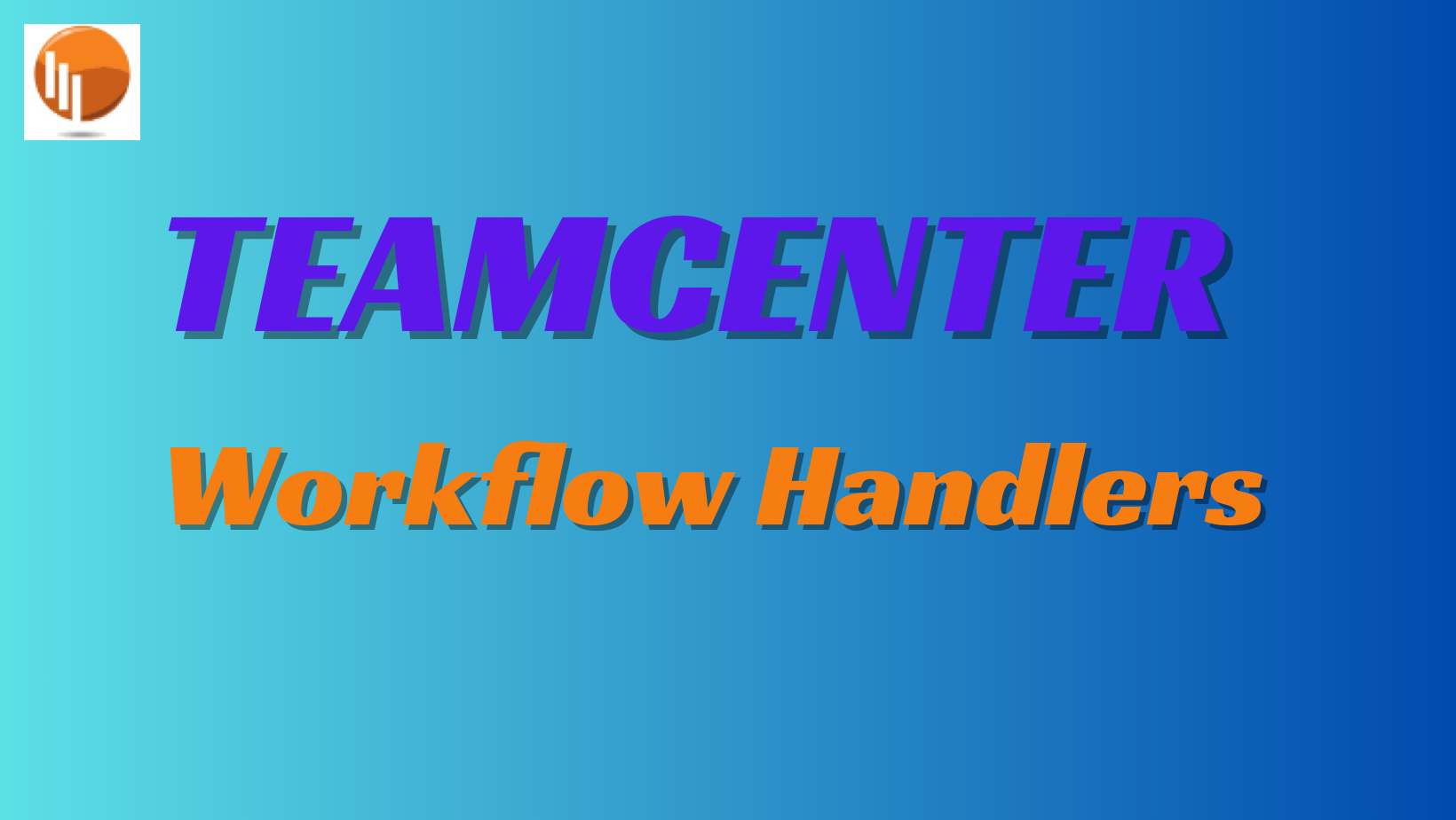
In workflow handlers, Product Lifecycle Management (PLM), efficient workflow management is crucial for streamlining processes and ensuring seamless project progression from start to finish. Teamcenter, Siemens’ leading PLM software, excels in this area, thanks in large part to its robust workflow handlers.
In this blog, we’ll delve into what workflow handlers are, their types, and how they can be used to enhance your workflow processes.
What Are Workflow Handlers?
Workflow handlers in Teamcenter are small, powerful programs built using the Integrated Toolkit (ITK). They serve as the building blocks of workflows, allowing for the extension and customization of tasks within the system. Workflow Handlers come in two main varieties: action handlers and rule handlers.
Action Handlers: Enhancing Task Actions
Action handlers are designed to extend and customize the actions that occur within a task. Think of them as the gears that turn behind the scenes, performing critical functions such as:
- Displaying Information: Presenting necessary data to users at the right time.
- Retrieving Previous Task Results: Carrying forward important data from earlier stages in the workflow.
- Notifying Users: Sending alerts and notifications to keep stakeholders informed.
- Setting Object Protections: Ensuring that sensitive data remains secure.
- Launching Applications: Automatically starting necessary software to assist in task completion.
These handlers allow you to tailor your workflow actions to fit specific needs, ensuring that each step in the process is as efficient and effective as possible.
Rule Handlers: Enforcing Business Rules
While action handlers perform tasks, rule handlers enforce business rules within the workflow. They ensure that certain conditions are met before actions can proceed. Here’s how they work:
- Condition Validation: Rule handlers check if defined conditions or rules are satisfied.
- If a condition is met, the handler returns an
EPM_gocommand, allowing the task to continue. - If a condition is not met, it returns an
EPM_nogocommand, halting the task. - Logical Operations: Multiple rule handlers can be combined using logical AND/OR conditions. For example, if several conditions need to be met for a task to proceed (AND condition), all must return
EPM_go. Alternatively, with an OR condition, only a specified number of rule handlers (a quorum) need to returnEPM_go.
This system ensures that workflows adhere strictly to business rules, reducing errors and enhancing compliance.
Copying and Pasting Handlers
One of the practical features in Teamcenter’s workflow management is the ability to copy and paste handlers across different actions and tasks. This functionality allows for the reuse of handler configurations, saving time and maintaining consistency. Here’s how you can do it:
- Copy Handlers: Select the handlers you want to copy from one action or task.
- Paste Handlers: Target the destination task or action within the same or different workflow template. Ensure the process template is in Edit mode when pasting.
Updating Task Templates
With the release of Teamcenter version 10.1, many workflow handlers and their arguments were renamed for consistency. Here’s how you can manage the transition:
- New Installations: For installations post-version 10.1, the new naming conventions are already in place.
- Upgraded Installations: The migrate_wf_handlers utility is used during the upgrade process to rename handlers and arguments automatically.
- Importing Templates: When importing templates from a version prior to 10.1, you must run the migrate_wf_handlers utility afterward to ensure compatibility.
Customizing Handlers with XML Mapping
For those with custom handlers, Teamcenter provides the migrate_wf_handlers utility along with a custom XML mapping file to rename handlers and arguments. This mapping file allows for detailed customization and includes elements such as <Remove>, <Replace>, <Update>, <Add>, and <Modify>. Here’s an example of what this might look like:
<Mapping>
<Remove>
<Handler name="old-handler-name" />
</Remove>
<Update>
<Handler name="old-handler-name" newName="new-handler-name">
<Remove>
<Argument name="arg5" />
</Remove>
<Add>
<Argument name="new-arg6" value="new-val6" />
</Add>
<Modify>
<Argument name="arg1" value="val1" newName="new-arg1" newValue="new-val1" />
</Modify>
</Handler>
</Update>
</Mapping>Conclusion
Workflow handlers are a vital aspect of Teamcenter, providing the flexibility and control needed to manage complex workflows effectively. By understanding and utilizing action handlers and rule handlers, you can ensure that your workflows are both efficient and compliant with your business rules. Whether you are copying handlers between tasks or updating templates to new versions, these tools offer the customization needed to streamline your processes.
Harness the power of workflow handlers to take your PLM workflows to the next level, ensuring your projects are managed with precision and efficiency.
